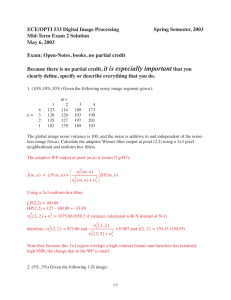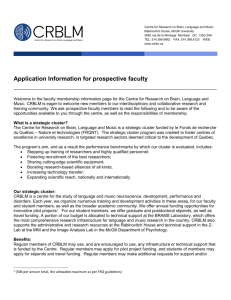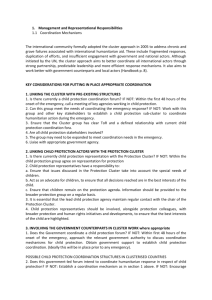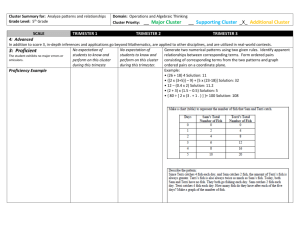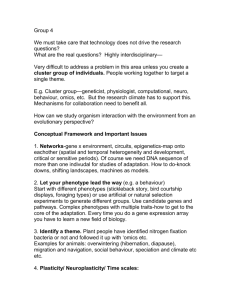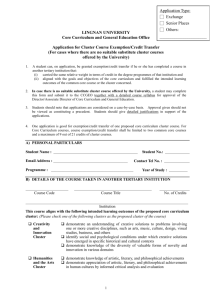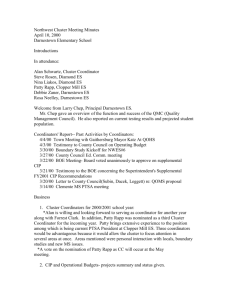supplementary-v2
advertisement
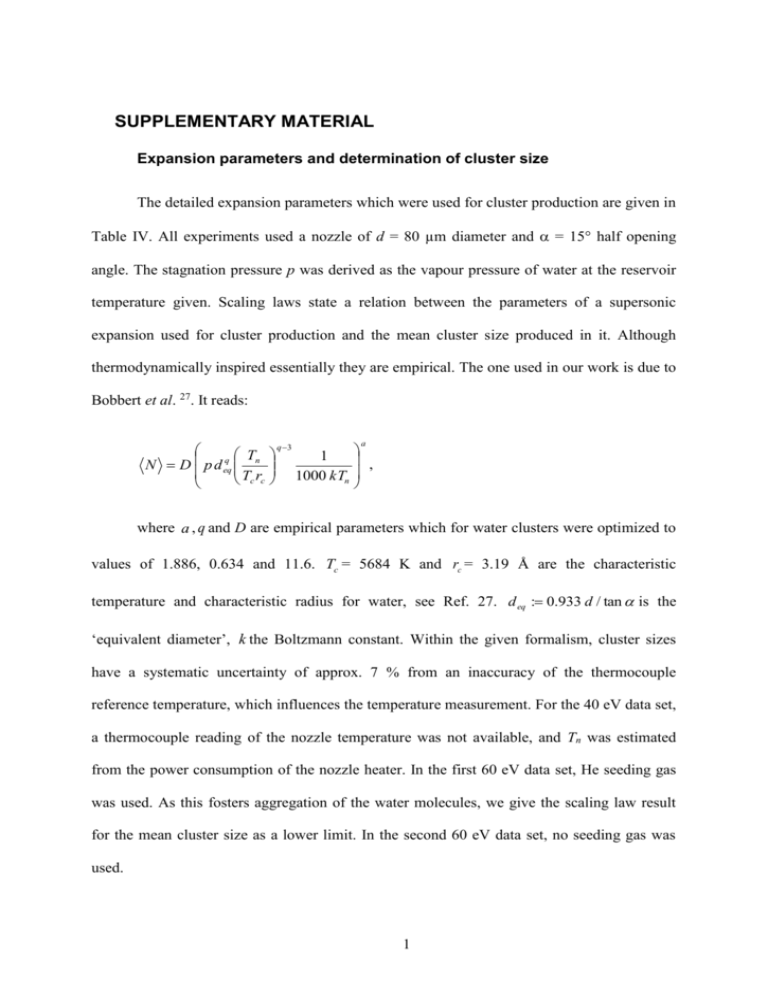
SUPPLEMENTARY MATERIAL Expansion parameters and determination of cluster size The detailed expansion parameters which were used for cluster production are given in Table IV. All experiments used a nozzle of d = 80 µm diameter and = 15° half opening angle. The stagnation pressure p was derived as the vapour pressure of water at the reservoir temperature given. Scaling laws state a relation between the parameters of a supersonic expansion used for cluster production and the mean cluster size produced in it. Although thermodynamically inspired essentially they are empirical. The one used in our work is due to Bobbert et al. 27. It reads: T N D p d eqq n Tc rc q 3 a 1 , 1000 kTn where a , q and D are empirical parameters which for water clusters were optimized to values of 1.886, 0.634 and 11.6. Tc = 5684 K and rc = 3.19 Å are the characteristic temperature and characteristic radius for water, see Ref. 27. d eq : 0.933 d / tan is the ‘equivalent diameter’, k the Boltzmann constant. Within the given formalism, cluster sizes have a systematic uncertainty of approx. 7 % from an inaccuracy of the thermocouple reference temperature, which influences the temperature measurement. For the 40 eV data set, a thermocouple reading of the nozzle temperature was not available, and Tn was estimated from the power consumption of the nozzle heater. In the first 60 eV data set, He seeding gas was used. As this fosters aggregation of the water molecules, we give the scaling law result for the mean cluster size as a lower limit. In the second 60 eV data set, no seeding gas was used. 1 TABLE IV. Expansion parameters used for production of water clusters: Tr : Reservoir temperature, p : stagnation pressure, Tn : Nozzle temperature, N : Cluster mean size as given by Ref. 27. p (mbar) Tn (°C) N Tr (°C) 40eV 102.5 1106 105-117 52-63 60eV set 1 110 1432 117 >84 60eV set 2 110 1432 117 84 Photoelectron angular distribution of water monomers The photoelectron spectrum of water monomers has been presented a number of times (see e.g. Ref.s 1, 2). For comparison, we here present two of the reference spectra recorded for this work: FIG. 3. Photoelectron spectrum water monomer, recorded at a photon energy of 40 eV at an angle of 0° and at the ‘magic angle’ of 54.7° (dotted and solid trace). 2

